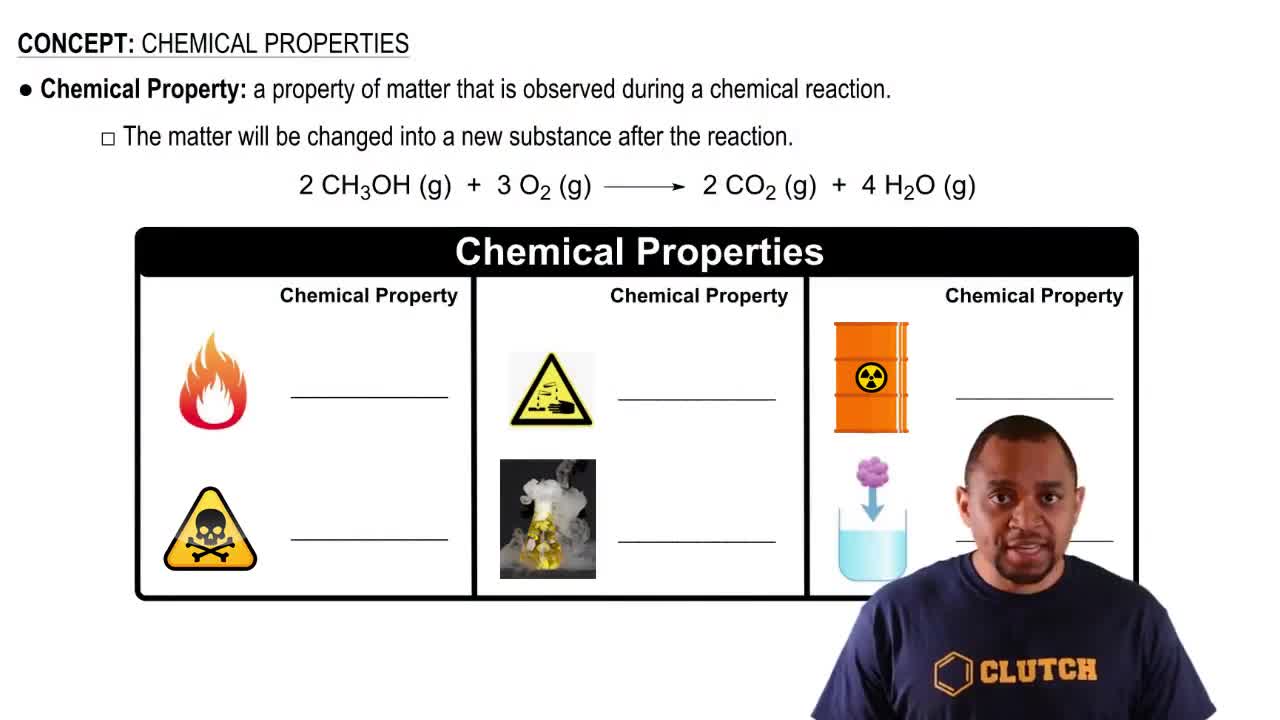Write the balanced chemical equation for the reaction of solid strontium with iodine gas.
Write the balanced equation for the reaction of hydrogen gas with bromine gas.

Verified Solution
Key Concepts
Chemical Reactions

Balancing Chemical Equations

Diatomic Molecules

Write the balanced chemical equation for the reaction of solid lithium with liquid water.
Write the balanced chemical equation for the reaction of solid potassium with liquid water.
The combustion of gasoline produces carbon dioxide and water. Assume gasoline to be pure octane (C8H18) and calculate the mass (in kg) of carbon dioxide that is added to the atmosphere per 10.0 kg of octane burned. (Hint: Begin by writing a balanced equation for the combustion reaction.)
Many home barbeques are fueled with propane gas (C3H8). What mass of carbon dioxide (in kg) is produced upon the complete combustion of 37.8 L of propane (approximate contents of one 5-gallon tank)? Assume that the density of the liquid propane in the tank is 0.621 g/mL. (Hint: Begin by writing a balanced equation for the combustion reaction.)
Aspirin can be made in the laboratory by reacting acetic anhydride (C4H6O3) with salicylic acid (C7H6O3) to form aspirin (C9H8O4) and acetic acid (C2H4O2). The balanced equation is: C4H6O3 + C7H6O3 → C9H8O4 + C2H4O2 In a laboratory synthesis, a student begins with 6.00 mL of acetic anhydride (density= 1.08 g/ mL) and 2.50 g of salicylic acid. Once the reaction is complete, the student collects 1.82 g of aspirin. Determine the limiting reactant, theoretical yield of aspirin, and percent yield forthe reaction.
